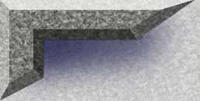Toya Maru Among Major World Ship
Disasters
By James Donahue
The Toya Maru was sunk in the Sea of Japan when caught in a major typhoon on September
26, 1954. The disaster made headlines around the world because the vessel, a ferry carrying an estimated 1,300 passengers
across the Tsugaru Strait, between the islands of Hokkaido and Honshu, foundered and took an estimated 1,128 souls to the
bottom with it.
The 390-foot-long ferry, launched in 1947, was the flag ship of the Japanese National
Railways fleet. It was one of the first Japanese liners to be fitted with radar and had the honor of transporting the Emperor
of Japan only weeks before its loss.
The ferry operated on a regular daily run from Aomori and Hakodate, a normal trip
lasting about four and one-half hours.
Tragically, those first ferries launched right after the war were not equipped with
sea-gates to help them endure storms. This was because the vessels rarely put far out to sea and engineers believed that the
ship’s pumps could easily handle any inrushing water that flooded the lower deck. They did not design the ship to deal
with typhoons, however.
The lack of a sea-gate and the inability of weather forecasters to accurately predict
the location and speed at which Typhoon Marie was approaching the islands were key factors in the loss of the Toya Maru.
On that fatal day, the Toya Maru arrived at Hakodate after its first trip at 11 a.m.,
and was scheduled to start back shortly before 4 p.m. The captain knew the typhoon was coming but weather forecasts estimated
that it would not strike the area until the ferry arrived safely back in Admori.
It all might have worked out that way except for one flaw. Another fleet ferry, the
Dai ll Seikan Maru, a smaller and more vulnerable vessel, was ordered to remain in port. So the passengers and vehicles were
transferred to the Toya Maru. This delayed the start of the trip and overloaded the ferry.
By then the captain was so concerned about getting his vessel caught by the approaching
typhoon that he canceled departure. As the vessel remained moored in the harbor, the area was hit by winds and heavy rains.
But like all cyclonic storms of that nature, Marie was preceded by bands of wind and rain. When that first band passed, the
captain mistakenly assumed the storm was over and ordered the lines cast off. Thus the Toya Maru steamed off in the night
to meet its destiny on the high seas.
By the time it struck the Typhoon had gained strength and was classified as an extra-tropical
cyclone. The wind struck the liner from the south-southeast within minutes after it put to sea. The captain dropped anchor
just off Hakodate and attempted to wait out the storm there. But when the high seas hit, the anchor did not hold and the ship
was set adrift. The great waves were flooding the ship through the open vehicle deck and water quickly flooded the engine
room and put out the fires. The crew sent out at least one SOS before the vessel capsized and sank. Of the 1300 passengers
and crew members there were only 150 survivors.
The record shows that four other ferries sank in that same typhoon, although none
of them were carrying passengers. A total of 1,430 people died at sea off Japan in that storm.

